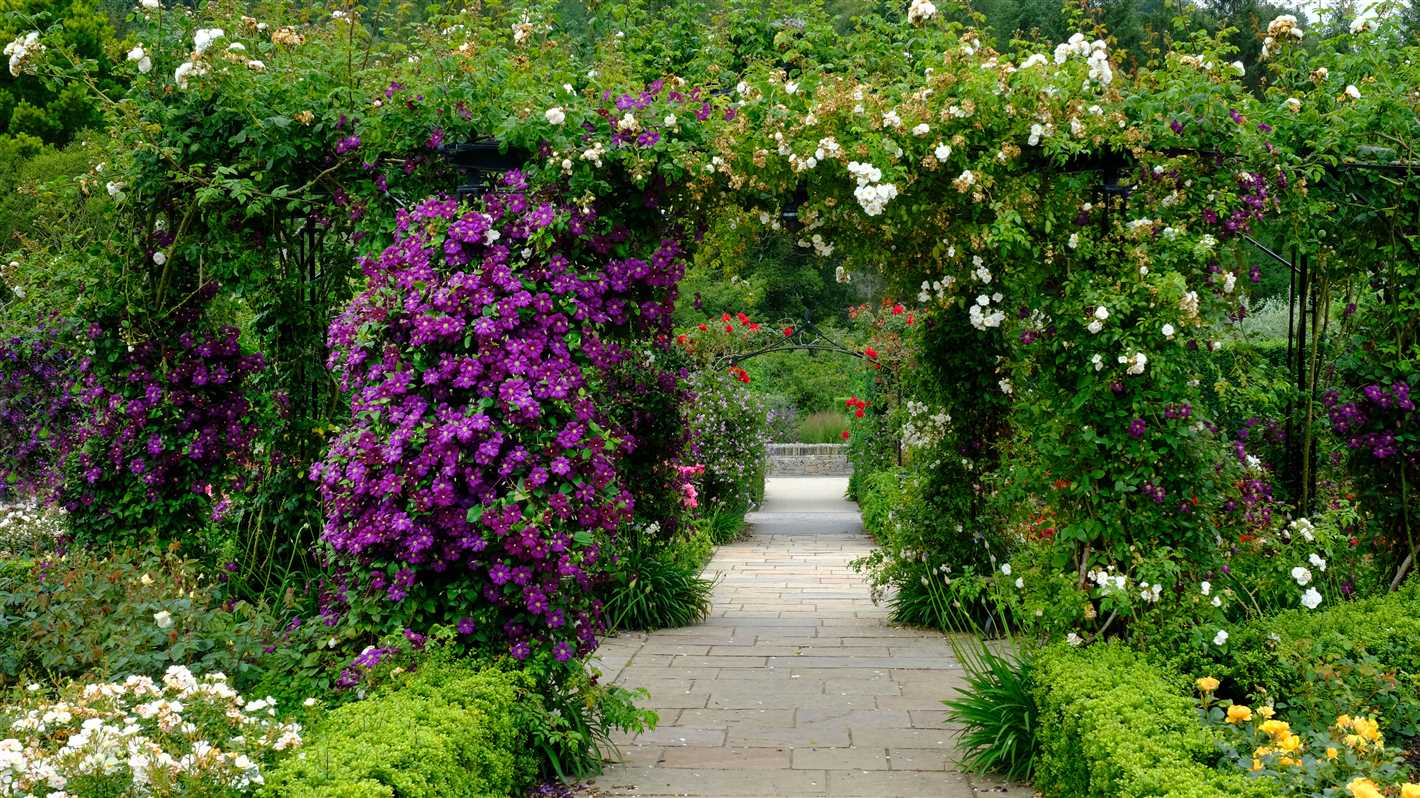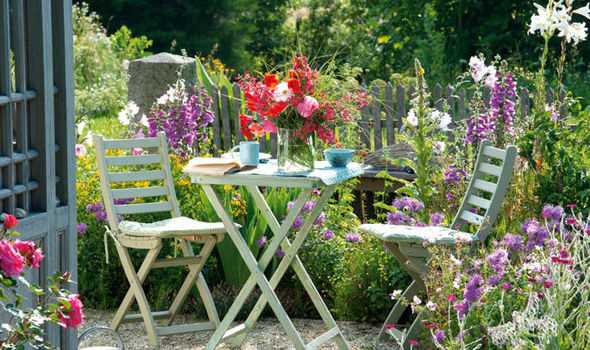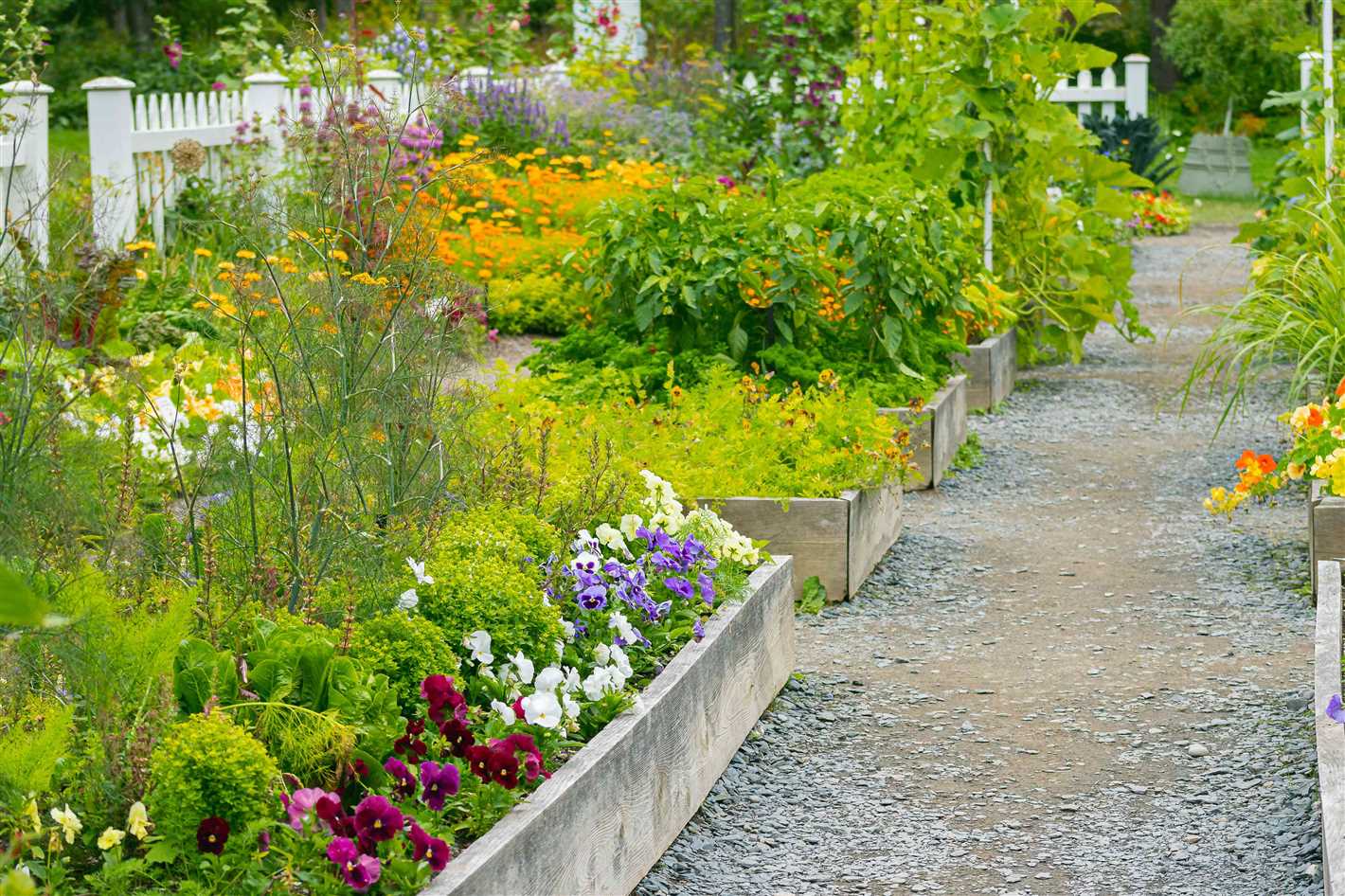- Planting for Fall
- Pruning and Trimming
- Weed Control
- 1. Remove Existing Weeds
- 2. Mulch
- 3. Use Weed Fabric
- 4. Regular Maintenance
- 5. Chemical Weed Control
- Conclusion
- Watering and Irrigation
- 1. Regular Watering Schedule
- 2. Watering Deeply
- 3. Morning Watering
- 4. Avoid Overwatering
- 5. Mulching
- 6. Efficient Irrigation Systems
- 7. Monitor Soil Moisture
- 8. Watering Newly Planted or Transplanted Plants
- 9. Consider the Plant’s Needs
- Pest Control
- 1. Monitor and Identify Pests
- 2. Remove Infested Plants
- 3. Use Organic Pest Control Methods
- 4. Install Barriers
- 5. Rotate Crops
- 6. Make Your Garden Less Attractive to Pests
- 7. Seek Professional Help if Needed
- Soil Care and Fertilizing
- Remove Weeds
- Test Your Soil
- Add Organic Matter
- Fertilize as Needed
- Mulch Your Beds
- Water Deeply
- Cover with a Cover Crop
- Monitor and Adjust
- Cleaning and Organizing
- Clearing Away Debris
- Cleaning Tools and Equipment
- Organizing Garden Supplies
- Planned Winter Protection
- Preparing for Winter
- Cleaning up the Garden
- Protecting Plants
- Pruning and Cutting Back
- Winterizing Tools and Equipment
- Preparing the Soil
- Planning for Next Year
- Final Thoughts
- Question-answer:
- What are the essential garden tasks that need to be done at the end of summer?
- Why is deadheading flowers important?
- How do I cut back perennials?
- When is the best time to divide and transplant plants?
- How should I clean and store garden tools?
- Why is it important to prepare the soil for next season?
- Video: Grow Tomatoes NOT Leaves | How to Prune Tomato Plants for LOTS of Fruit
As the end of summer approaches, many gardeners might be tempted to sit back and relax, thinking that their work is done for the season. However, this is the perfect time to take action and ensure that your garden remains healthy and thriving through the transition into autumn and beyond. There are several essential tasks that should be completed at the end of summer to set your garden up for success in the coming months.
One important task is to clean up and remove any dead or dying plants. This includes removing any spent flowers, cutting back perennials that have finished flowering, and removing any weeds that may have emerged during the summer months. Removing dead or dying plants not only improves the appearance of your garden but also helps to prevent the spread of disease and pests.
Another crucial task is to prepare your soil for the next growing season. This can be done by adding organic matter, such as compost or well-rotted manure, to improve soil fertility and structure. It’s also a good idea to test your soil’s pH levels and make any necessary adjustments by adding lime or sulfur. Taking the time to prepare your soil now will ensure that your plants have the nutrients they need to thrive in the future.
Additionally, don’t forget to inspect and repair any garden structures or equipment that may have been damaged or worn during the summer months. This includes checking for loose fence posts, repairing trellises, and sharpening garden tools. By addressing these issues now, you’ll be ready to tackle any future gardening tasks more efficiently.
So, while it may be tempting to kick back and enjoy the last days of summer, remember that there are still important tasks that need to be completed in the garden. By taking the time to clean up dead plants, prepare the soil, and inspect your garden structures, you’ll be setting yourself up for success in the coming months. Don’t relax just yet, your garden will thank you!
Planting for Fall
In the late summer, it’s time to start thinking about planting for the fall season. Fall planting allows you to extend the growing season and enjoy a beautiful garden even as the temperatures start to cool down.
1. Choose the Right Plants
When selecting plants for fall, focus on those that thrive in cooler temperatures and shorter daylight hours. Look for cool-season vegetables like broccoli, cauliflower, and kale. Consider planting fall-flowering perennials such as chrysanthemums or asters to add color to your garden.
2. Prepare the Soil
Before planting, make sure to prepare the soil. Remove any weeds or debris and loosen the soil with a garden fork or tiller. Mix in compost or organic matter to improve its fertility and drainage.
3. Planting Techniques
When planting in the fall, it’s important to follow specific techniques to ensure successful growth. Dig a hole that is slightly larger than the plant’s root ball and gently loosen the roots before placing it in the hole. Fill the hole with soil and press it firmly around the plant.
4. Watering
Proper watering is crucial for fall-planted plants to establish strong root systems. Give newly planted plants a thorough watering and continue to water regularly throughout the fall season, making sure the soil stays moist but not waterlogged.
5. Mulching
Applying a layer of mulch around your plants helps to retain moisture, regulate temperature, and suppress weed growth. Use organic mulch such as straw, wood chips, or shredded leaves to provide insulation for the roots.
6. Protect from Frost
As the fall season progresses and temperatures drop, it’s important to protect your plants from frost. Cover sensitive plants with row covers or cloths overnight when frost is expected to prevent damage.
7. Monitor and Maintain
Regularly monitor your fall-planted garden and look out for any signs of pests or diseases. Remove any diseased or damaged plants to prevent the spread. Keep the garden clean and tidy to decrease the chances of pest infestations.
Following these steps will help you create a thriving fall garden that will continue to provide beauty and fresh produce well into the cooler months.
Pruning and Trimming
Pruning and trimming your plants at the end of summer is an essential task to help maintain their health and shape. Here are some important tips to keep in mind:
- Remove dead or diseased branches: Look for any branches that are dead or showing signs of disease. Use clean, sharp pruning shears to cut them back to healthy tissue. This will prevent the spread of disease and allow the plant to focus its energy on healthy growth.
- Thin out crowded growth: Over time, plants can become crowded with excess branches and foliage. Thin out the growth by removing any branches that are crossing or rubbing against each other. This will improve air circulation and reduce the risk of pests and diseases.
- Prune for shape: Pruning can also be done to shape your plants and promote a more aesthetic appearance. Trim back any branches that are growing in undesirable directions or are too long.
- Prune flowering shrubs: If you have flowering shrubs, it’s important to know when to prune them. Some shrubs should be pruned immediately after flowering, while others should be pruned in late winter or early spring. Consult a gardening guide or ask a local expert for specific recommendations.
When pruning and trimming, always use clean, sharp tools to make clean cuts. This will minimize damage to the plant and reduce the risk of infection. It’s also a good practice to disinfect your tools between each cut, especially when working with diseased plants.
Remember that different plants have different pruning requirements, so it’s important to do some research and learn about the specific needs of your plants. When in doubt, don’t hesitate to seek advice from a gardening professional.
Weed Control
Weeds can quickly take over a garden if not kept in check. At the end of summer, it is important to take steps to control and prevent weeds from spreading.
1. Remove Existing Weeds
Start by manually removing any existing weeds from your garden beds. Use a garden fork or trowel to dig out the roots as well, ensuring that the weeds are completely removed. Dispose of the weeds in a bag or compost pile.
2. Mulch
Once the weeds have been removed, apply a layer of mulch to your garden beds. Mulch helps to prevent weed growth by blocking sunlight and creating a barrier between weed seeds and the soil. Use a thick layer of organic mulch, such as wood chips or straw, to effectively smother any remaining weed seeds.
3. Use Weed Fabric
If you have particularly problematic areas in your garden that are prone to weeds, consider using weed fabric. Weed fabric is a permeable material that allows water and nutrients to reach your plants while preventing weeds from growing. Lay the fabric down on the soil before planting, securing it with stakes or rocks.
4. Regular Maintenance

To keep weeds under control, it is important to regularly maintain your garden. This includes pulling out any new weeds as soon as you spot them, and regularly reapplying mulch to keep weed growth suppressed. Additionally, make sure to keep your garden beds well-watered and fertilized, as healthy plants are better able to compete with weeds.
5. Chemical Weed Control
If manual methods and mulch are not sufficient to control weeds in your garden, you may consider using chemical weed control products. However, it is important to use these products responsibly and according to the instructions provided. Always follow safety precautions and be mindful of the environmental impact of using chemicals in your garden.
Conclusion
Taking steps to control weeds at the end of summer will help keep your garden healthy and weed-free. By removing existing weeds, applying mulch, using weed fabric, maintaining your garden, and considering chemical weed control if necessary, you can ensure that your garden thrives without being overtaken by weeds.
Watering and Irrigation
Watering is a crucial task in the garden, especially in the end of summer when plants are still experiencing hot and dry weather conditions. Here are a few important aspects to consider when it comes to watering and irrigation:
1. Regular Watering Schedule

Establishing a regular watering schedule is important to ensure that your plants receive adequate moisture. Most plants require about 1 inch of water per week, but this can vary depending on the specific needs of each plant.
2. Watering Deeply
Instead of watering shallowly and frequently, it is best to water deeply and less often. This encourages plants to develop deep, strong root systems that can better withstand drought conditions.
3. Morning Watering
Watering in the morning is generally the best time as it allows plants to absorb the moisture before the heat of the day. This helps to prevent evaporation and allows the leaves to dry out during the day, reducing the risk of fungal diseases.
4. Avoid Overwatering
While it is important to provide enough water, it is equally important to avoid overwatering. Overwatering can lead to root rot and other problems. Allow the soil to dry out slightly between waterings to prevent waterlogged conditions.
5. Mulching
Applying a layer of mulch around your plants helps to retain moisture in the soil, reducing the need for frequent watering. Mulch also helps to suppress weeds and regulate soil temperature.
6. Efficient Irrigation Systems
Consider using efficient irrigation systems such as drip irrigation or soaker hoses. These systems deliver water directly to the plants’ root zones, minimizing evaporation and water waste.
7. Monitor Soil Moisture
Regularly monitor the moisture level in the soil to ensure that your plants are receiving enough water. Use a moisture meter or simply stick your finger into the soil to check for moisture. Adjust your watering schedule accordingly.
8. Watering Newly Planted or Transplanted Plants
Newly planted or transplanted plants require extra attention and care. Water them more frequently to help them establish their roots in their new environment.
9. Consider the Plant’s Needs
Each plant has different water requirements, so it’s important to consider the specific needs of each plant. Some plants require more water, while others are more drought-tolerant. Group plants with similar water needs together to make watering more efficient.
By following these watering and irrigation tips, you can ensure that your garden stays healthy and vibrant until the end of summer.
Pest Control
1. Monitor and Identify Pests
As summer comes to an end, it’s important to keep an eye out for pests that could harm your garden. Regularly inspect your plants, flowers, and vegetables to identify any signs of infestation.
Look for chewed leaves, wilting plants, or the presence of tiny holes on the leaves, which may indicate the presence of pests.
2. Remove Infested Plants
If you spot any plants that are severely infested or beyond saving, it’s best to remove them from your garden. This will help prevent the pests from spreading to other healthy plants.
Make sure to properly dispose of the infested plants, either by sealing them in a plastic bag and throwing them away or by burning them, if allowed in your area.
3. Use Organic Pest Control Methods
To control pests without the use of chemicals, consider using organic pest control methods. Some effective options include:
- Handpicking: Pick off pests like caterpillars, snails, and slugs from your plants manually.
- Beneficial Insects: Attract beneficial insects like ladybugs and lacewings to your garden, as they prey on pests.
- Insecticidal Soap: Use a homemade or commercial insecticidal soap to kill certain pests.
4. Install Barriers
Installing barriers can help prevent pests from reaching your plants. For example:
- Netting: Use netting to protect fruit trees and berry bushes from birds and squirrels.
- Floating Row Covers: Cover your vegetable and flower beds with floating row covers to keep out insects.
5. Rotate Crops
Rotating your crops from year to year can help disrupt the life cycle of pests and reduce their population. Different plants attract different pests, so rotating crops helps break the cycle.
For example, if you had tomatoes in a specific area this year, plant a non-solanaceous crop like lettuce or beans in that spot next year.
6. Make Your Garden Less Attractive to Pests
There are several ways you can make your garden less attractive to pests:
- Remove Debris: Clean up fallen leaves, weeds, and other debris that may harbor pests.
- Prune Properly: Prune your plants to improve air circulation, which can help deter pests.
- Water Strategically: Don’t overwater your plants, as excess moisture can attract pests.
7. Seek Professional Help if Needed
If your pest problem persists or becomes overwhelming, don’t hesitate to seek professional help. A pest control expert can identify the pests and recommend the most effective treatment options.
They can also provide guidance on using pesticides safely and responsibly if necessary.
By taking these pest control measures at the end of summer, you can protect your garden from destructive pests and ensure its health and productivity for the upcoming seasons.
Soil Care and Fertilizing
As summer comes to an end, it’s important to take care of your garden soil and ensure that it remains healthy for the next growing season. Here are some essential soil care and fertilizing tasks that you should consider:
Remove Weeds

Before fertilizing your garden, take the time to remove any remaining weeds. Weeds compete with your plants for nutrients and water, so it’s important to get rid of them to ensure optimal soil health.
Test Your Soil
Consider testing your soil to assess its nutrient levels and pH balance. This will help you determine what nutrients your soil may be lacking and whether any amendments are needed. You can buy a soil testing kit or send a sample to a local agricultural extension service for analysis.
Add Organic Matter

One of the best ways to improve your garden soil is by adding organic matter, such as compost or well-rotted manure. This will help improve soil structure, drainage, and fertility. Spread a layer of organic matter over your garden beds and gently work it into the top few inches of soil.
Fertilize as Needed
Based on the results of your soil test, consider fertilizing your garden to replenish any nutrient deficiencies. Use a balanced fertilizer or one that’s specifically formulated for the type of plants you grow. Follow the instructions on the packaging for application rates and timing.
Mulch Your Beds
Apply a layer of mulch, such as straw or wood chips, to your garden beds. Mulching helps retain moisture, suppresses weed growth, and moderates soil temperature. Spread a layer of mulch around your plants, making sure to keep it a few inches away from the stems.
Water Deeply
Provide your garden with a deep watering before the end of summer. This will help replenish soil moisture and ensure that your plants are well-hydrated before the cooler months arrive. Water early in the morning to minimize evaporation.
Cover with a Cover Crop
If you’re not planning on planting anything in your garden during the fall and winter months, consider sowing a cover crop. Cover crops, such as oats or rye grass, help prevent soil erosion, improve fertility, and suppress the growth of weeds. Follow the instructions on the seed package for sowing and maintenance.
Monitor and Adjust
Throughout the fall and winter, monitor your garden soil and make any necessary adjustments. Check soil moisture levels, weed growth, and overall plant health. Make any necessary additions or amendments to ensure that your soil remains in optimal condition.
By taking the time to care for your garden soil and fertilize as needed, you’ll be setting yourself up for a successful growing season next year. Remember to always follow the specific needs of your plants and adjust your soil care routine accordingly.
Cleaning and Organizing

As summer comes to an end, it’s important to clean and organize your garden to prepare for the fall and winter months. By taking the time to tidy up your garden now, you’ll make things easier for yourself when it comes time to start planting again in the spring.
Clearing Away Debris
- Remove any fallen leaves, twigs, and dead plants from your garden beds. These can harbor pests and diseases over the winter.
- Dispose of any diseased or infected plants to prevent the spread of diseases to healthy plants.
- Clear away any weeds that have grown since your last weeding session to prevent them from going to seed.
Cleaning Tools and Equipment
After a season of use, your gardening tools and equipment may be in need of some maintenance. Take the time to clean and care for them now, so they’ll be ready for next year.
- Clean and sharpen your pruning shears, saws, and other cutting tools.
- Wipe down your garden tools and equipment to remove any dirt or debris.
- Consider oiling any metal parts to prevent rusting.
Organizing Garden Supplies
A well-organized garden shed or storage area makes it easier to find and access your gardening supplies when you need them. Take the time to sort through your supplies and tidy up your storage area.
- Throw away any expired or unusable chemicals or fertilizers.
- Organize your seeds and label them by type and date.
- Group similar tools together and hang them up or store them in bins.
- Consider investing in storage solutions such as shelves or hooks to maximize your space.
Planned Winter Protection
While the weather is still mild, it’s a good idea to plan and prepare for winter protection for any delicate plants in your garden.
- Identify any plants that are sensitive to frost or cold temperatures.
- Research and invest in covers, cloths or other protection methods that will help shield these plants.
- Consider relocating potted plants to a sheltered area or bringing them indoors.
- Plan for regular watering and maintenance of winter protection structures if necessary.
By cleaning and organizing your garden at the end of summer, you’ll set the stage for a successful and productive garden in the seasons to come. Plus, you’ll have the satisfaction of knowing that your garden is well-prepared for the winter months.
Preparing for Winter
Cleaning up the Garden
As winter approaches, it is important to clean up your garden and remove any dead plants or debris. This will help prevent pests and diseases from overwintering in your garden.
Protecting Plants
Some plants may need extra protection during the winter months. Consider covering delicate plants with frost blankets or moving potted plants indoors. You can also use mulch to insulate the soil around plants and protect their roots from freezing.
Pruning and Cutting Back
Trim back any overgrown or dead branches from trees and shrubs. This will not only improve the appearance of your garden but also promote healthy growth in the spring.
Winterizing Tools and Equipment
Before winter sets in, make sure to clean and store your gardening tools and equipment properly. This includes draining water from hoses and sprinklers and sharpening and oiling your tools for the next gardening season.
Preparing the Soil
To prepare your soil for winter, consider adding organic matter such as compost or mulch. This will help improve soil structure and fertility, readying your garden for planting in the spring.
Planning for Next Year
While you’re preparing your garden for winter, take the time to reflect on the past growing season and plan for the next. Consider what plants worked well in your garden and make a list of any changes or new additions you want to make for the upcoming year.
Final Thoughts
As summer comes to a close, it’s important not to relax too much when it comes to your garden. Taking the necessary steps to prepare for winter will ensure that your garden stays healthy and vibrant throughout the colder months and will set you up for a successful gardening season next year.
Question-answer:
What are the essential garden tasks that need to be done at the end of summer?
Some essential garden tasks that need to be done at the end of summer include deadheading flowers, cutting back perennials, dividing and transplanting plants, cleaning and storing garden tools, and preparing the soil for next season.
Why is deadheading flowers important?
Deadheading flowers is important because it encourages new blooms and prevents the flower from going to seed. This helps the plant to continue producing flowers for a longer period of time.
How do I cut back perennials?
To cut back perennials, you will need to remove the dead or dying foliage and stems. It is important to cut them back to around 2-3 inches above the ground. This helps to promote new growth in the following season.
When is the best time to divide and transplant plants?
The best time to divide and transplant plants is usually in the early fall or early spring. This allows the plants to establish their roots in their new location before the extreme temperatures of summer or winter.
How should I clean and store garden tools?
To clean garden tools, you should remove any dirt or debris, and then wash them with soap and water. After they are clean, make sure to dry them thoroughly to prevent rusting. Store them in a dry location, such as a shed or garage, to protect them from the elements.
Why is it important to prepare the soil for next season?
Preparing the soil for next season is important because it helps to replenish nutrients that may have been depleted during the growing season. It also helps to improve the soil structure and fertility, which provides a better growing environment for plants in the following season.







